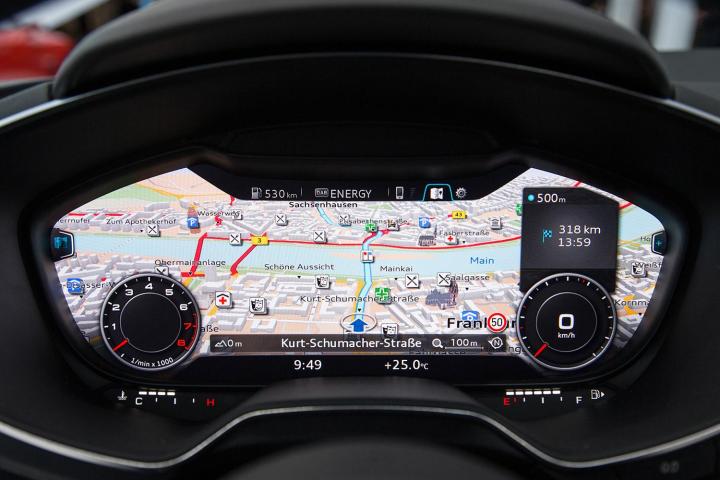
The A3 will get the Virtual Cockpit display next near, Audi electronics boss Ricky Hudi said in a recent interview with Car and Driver. The new tech option may come as part of a mid-cycle refresh for Audi’s smallest sedan.
The Virtual Cockpit eliminates the need for both analog gauges and a central display screen by blending the functions of both into one digital display placed in front of the driver. While it’s been lauded as a design innovation ever since its introduction, Audi has been unsure of which models to use it in.
The magic screen debuted with the current-generation TT, and has since moved to the R8. It’s also an option on the newly-redesigned 2016 Q7 SUV, and will be offered on the next-generation A4 sedan as well. Still, Audi has worried that the driver-focused setup might not be right for larger vehicles like the A8, and might be too expensive for its lower-priced models.
Hudi noted that the Virtual Cockpit will not be standard equipment on the A3, and that buyers looking at base models probably won’t be interested in the potential upgrade. He said the company expects it to be a popular choice on heavily-optioned models, though, and that greater sales volumes could eventually reduce the price of the system.
The Audi electronics chief also revealed that the next A8 will boast a teraflop of computing power, which he claims is an auto-industry record. Audi said this power will be necessary to handle all of the Audi flagship’s electronics and gadgets. Expected in 2017, the next-generation A8 will be Audi’s first production model with some degree of autonomous-driving capability. A “Traffic Jam Pilot” will allow it to navigate stop-and-go traffic without human intervention.
To safeguard all of that tech, Hudi also said that Audi is trying to anticipate attacks from hackers. He said a team of hackers gets access to every Audi before it goes on sale to check for vulnerabilities, and are encouraged to do anything they can to break into a car’s systems as a test.
Editors' Recommendations
- Audi’s new A3 Sedan learns a few tech tricks from its bigger siblings
- Audi Q3 Sportback crossover is a mini Q8 that won’t come to the U.S.


